Please help the National Weather Service spread these important safety messages on social media! Everyone is welcome to use the text and images provided below to help the NWS build a Weather-Ready Nation.
Facebook
Do you know the difference between a Storm Surge Warning and a Storm Surge Watch? A Storm Surge Warning means there is a danger of life-threatening flooding within the next 36 hours. A Storm Surge Watch means there is a possibility of life-threatening flooding within the next 48 hours. In either case, please promptly follow evacuation and other instructions from local officials. Visit weather.gov/hurricanesafety for more hurricane safety tips.
Twitter
Do you know the difference between a Storm Surge Warning and Watch? Visit weather.gov/hurricanesafety for more tips.
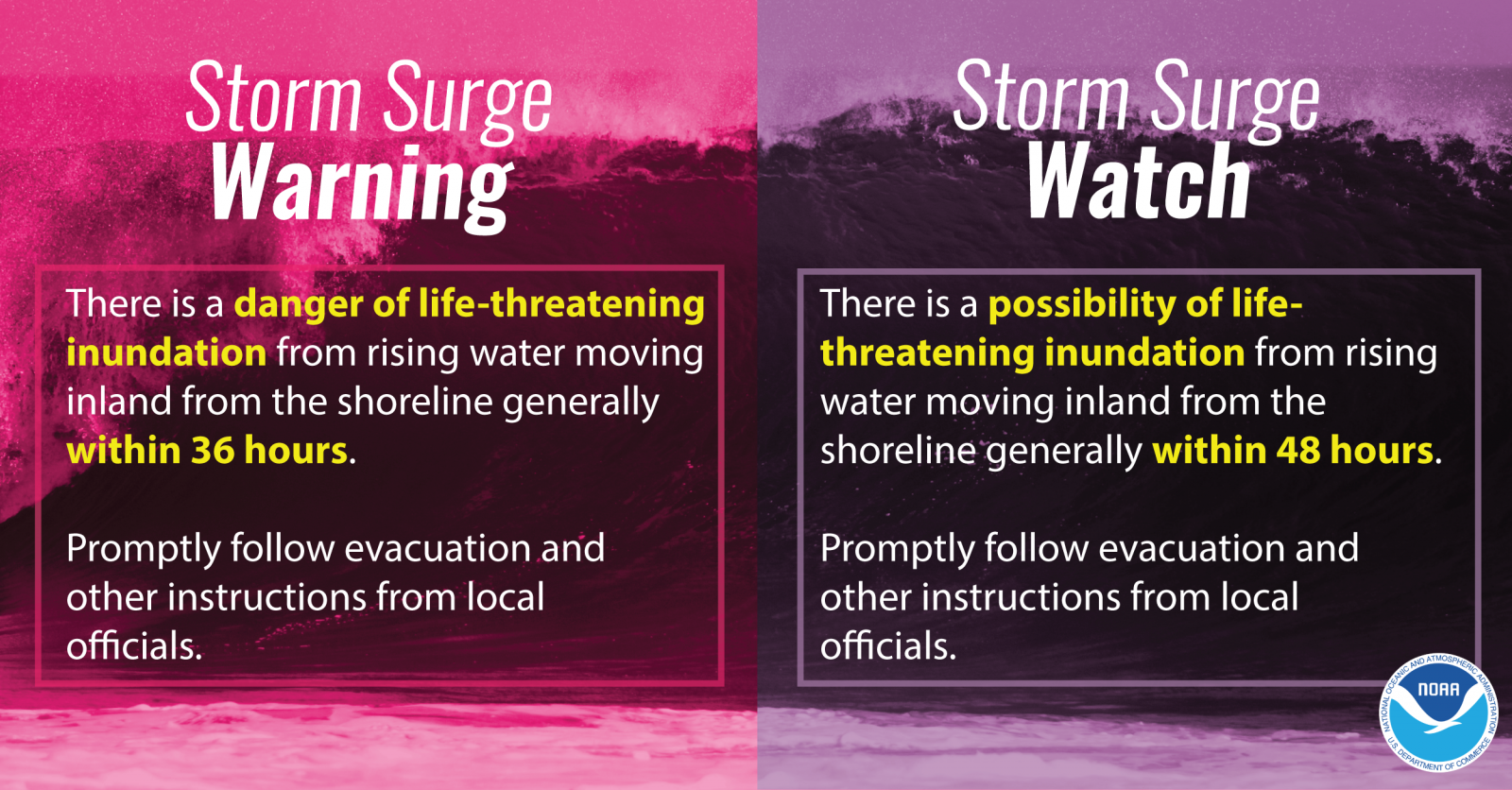
Facebook
Are you ready for hurricane season? Find out how you can prepare and know your evacuation zone. weather.gov/safety/hurricane
Twitter
Are you prepared for hurricane season? Visit weather.gov/safety/hurricane #HurricanePrep #ItOnlyTakesOne

Facebook
Get ready for hurricanes and severe weather with an Emergency Supply Kit that includes at least three days of food and water. Having your supplies stored in one place will give you peace of mind if you need to take shelter or evacuate. Everything will already be ready for you! ready.gov/kit
Twitter
Your hurricane emergency kit should include at least 3 days of food and water. ready.gov/kit #HurricanePrep

Facebook
Do you live in a hurricane evacuation zone? If so, you need to plan on where you and your family would go if you are told to evacuate. Learn what to do with FEMA’s Evacuation Guidelines, and know your evacuation route! Visit ready.gov/evacuating-yourself-and-your-family
Twitter
Plan where your family would ride out the storm if told to evacuate! ready.gov/evacuating-yourself-and-your-family #HurricanePrep
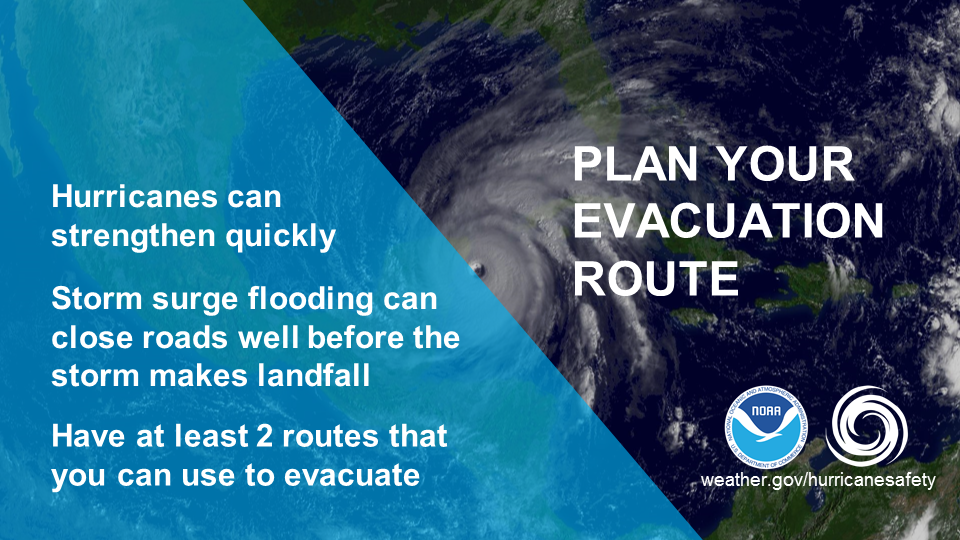
Facebook
Storm surge can cause major damage to your home and pose a significant threat for drownings - making it one of the greatest threats to life and property from a hurricane. Listen to local officials and evacuate immediately if told to do so. If you’re not in an evacuation zone, be sure to stay away from floodwaters and never drive through water-covered roads. Remember, Turn Around Don’t Drown! weather.gov/safety/flood-turn-around-dont-drown
Twitter
Storm surge is often the greatest threat to life and property from a #hurricane. weather.gov/safety/flood-turn-around-dont-drown #WeatherReady
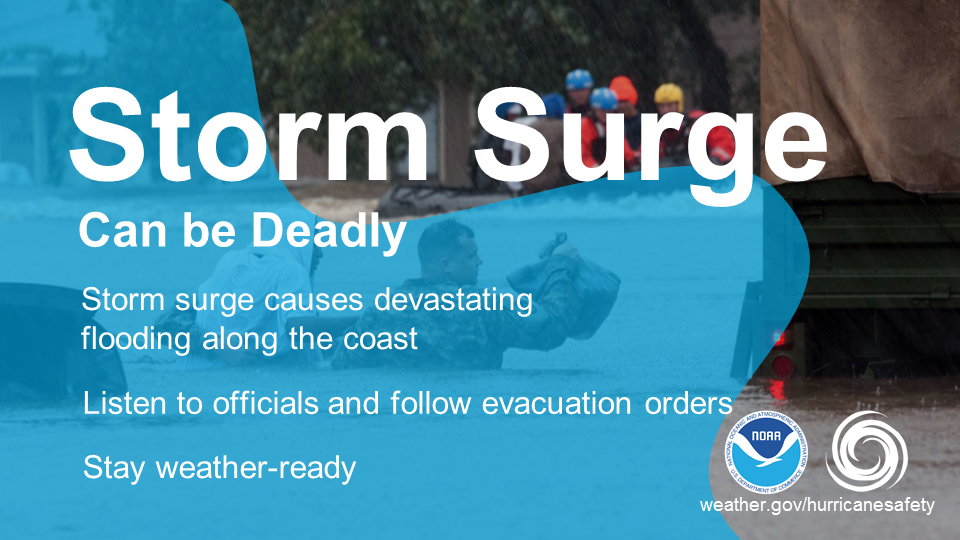
Facebook
Don't wait for a Tropical Storm or Hurricane Warning to secure your boat. By then it's too late to safely work on a dock. Listen to weather forecasts and plan ahead. Haul out your boat or add additional lines as soon as a tropical storm or hurricane watch is issued. This will typically give you 48 hours before the anticipated onset of storm winds and will allow you to safely secure your boat. weather.gov/safety/safeboating-before
Twitter
Boaters: Check the forecast and secure your boat for a #hurricane BEFORE a warning is issued. weather.gov/safety/safeboating-before #HurricanePrep
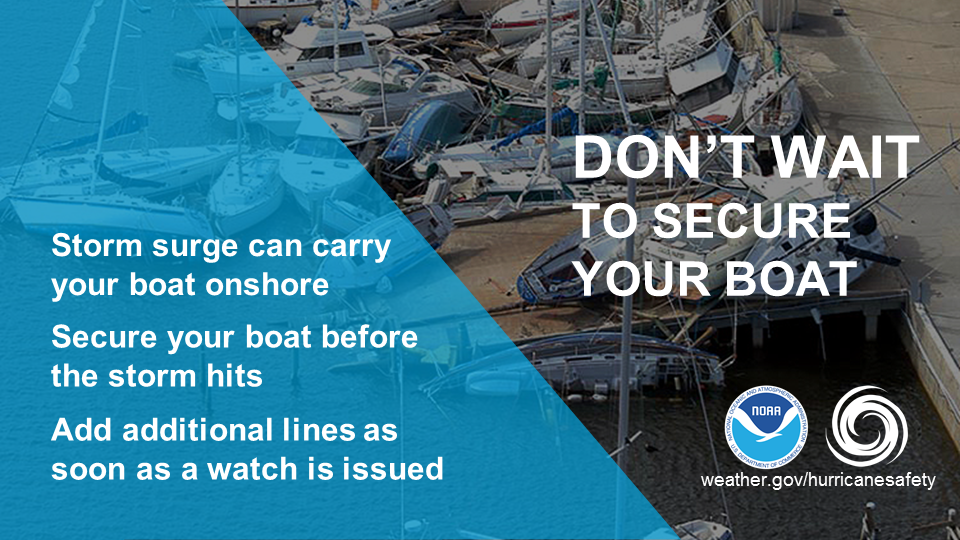
Facebook
Storm Surge is the abnormal rise of water generated by a storm’s winds. This hazard is historically the leading cause of deaths in the United States during storms. The destructive power of storm surge and large battering waves can result in a large loss of life and destruction along the coast. Storm surge can travel several miles inland, especially along bays, rivers, and estuaries. Watch this video to learn about storm surge and how to stay safe! https://www.youtube.com/watch?v=bBa9bVYKLP0 #HurricanePrep #ItOnlyTakesOne
Twitter
Learn about storm surge and how to stay safe! https://www.youtube.com/watch?v=bBa9bVYKLP0 #HurricanePrep #ItOnlyTakesOne
Facebook
Are you prepared for hurricane season? Find out how you can prepare and know your evacuation zone. Visit flash.org/hurricanestrong to find out more.
Twitter
Are you prepared for hurricane season? Visit flash.org/hurricanestrong to find out #HurricaneStrong #ItOnlyTakesOne

Facebook
If you have pets, do you know what you would do with them during a hurricane? Prepare for the worst by assembling an animal emergency supply kit and developing a pet care buddy system. Be aware that not all shelters accept pets. Whether you decide to stay put in an emergency or evacuate to a safer location, you will need to make plans in advance for your pets. ready.gov/animals
Twitter
What would you do with your pets during a hurricane? Visit ready.gov/animals to make a plan #HurricanePrep

Facebook
A tropical system does not have to be hurricane strength to be deadly. Tropical storms can produce strong winds, as well as heavy rainfall, which can lead to flooding. Don’t let your guard down when there’s a tropical storm watch. For more information about tropical storms and hurricanes, visit weather.gov/hurricanesafety
Twitter
Hurricanes can be deadly, but so can tropical storms! weather.gov/hurricanesafety #WeatherReady
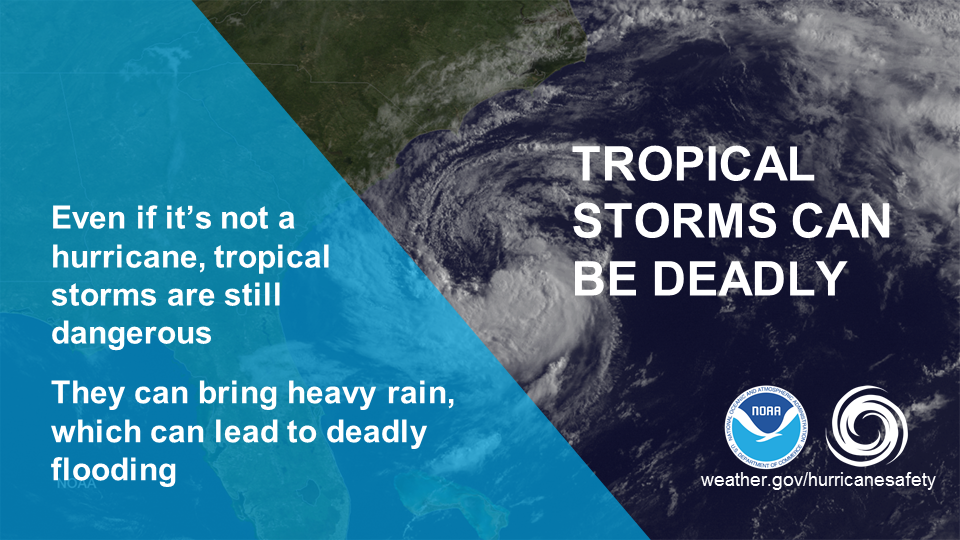
Facebook
Check out these resources from the Occupational Safety and Health Administration (OSHA) and NWS to help workers & employers prepare. osha.gov/dts/weather/hurricane/index.html
Twitter
Resources from #OSHA & @NWS to help workers & employers prepare: osha.gov/dts/weather/hurricane/index.html #HurricanePrep

Facebook
Remember Katrina, Iniki, and Hugo? Check out this interactive hurricane archive that shows the path and intensity of previous hurricanes and tropical storms, and get motivated to prepare for the next storm. Visit coast.noaa.gov/hurricanes/
Twitter
Remember Katrina, Iniki, and Hugo? View past storms at coast.noaa.gov/hurricanes/ #HurricanePrep #ItOnlyTakesOne

Facebook
Your family may not be together when a disaster strikes so it is important to plan in advance. How will you get to a safe place? How will you contact one another? How will you get back together? What will you do in different situations? Create a Family Communications Plan. Learn how here: ready.gov/make-a-plan
Twitter
Your family may not be together when a disaster strikes. Make a plan. ready.gov/make-a-plan #HurricanePrep
